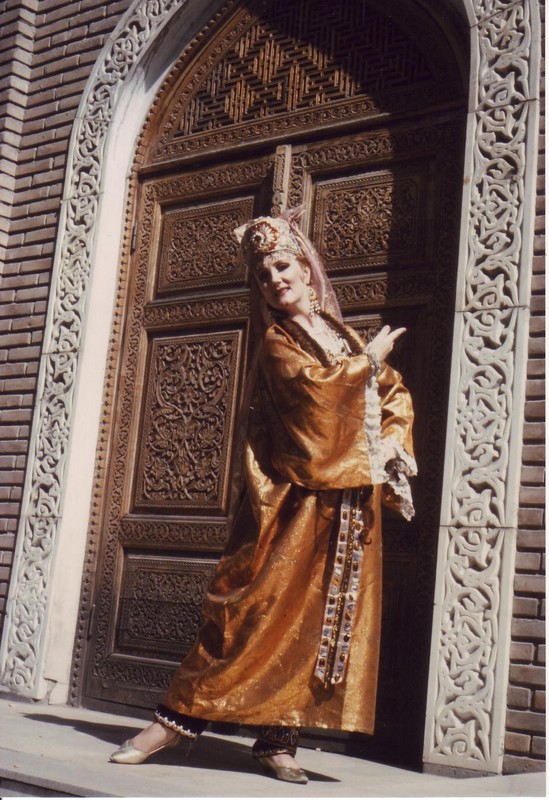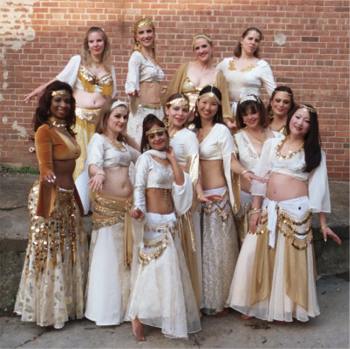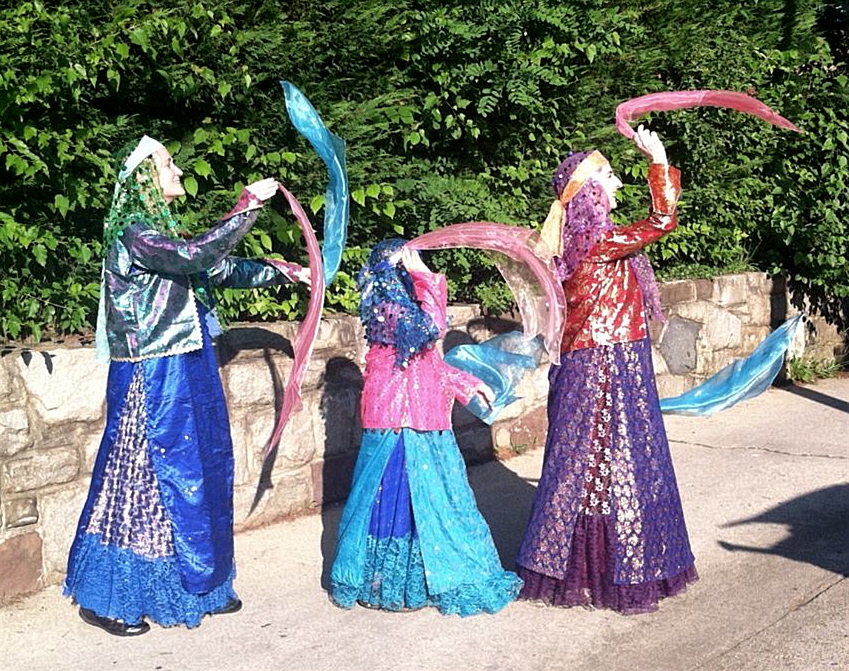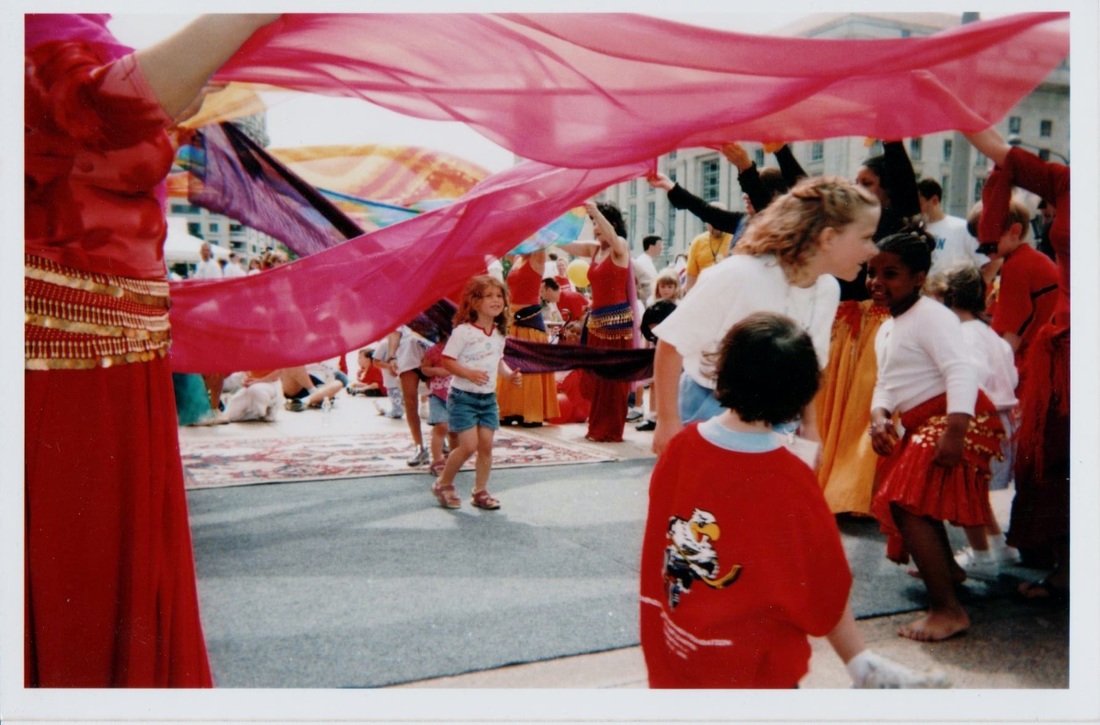Weekly VIRTUAL Dance Classes
Summer 2020

PERSIAN HISTORICAL DANCE classes via Zoom with Dr. Laurel Victoria Gray.
TUESDAYS at 7pm Eastern US Time.
5 weeks for $50 USD.
Includes historically inspired choreography, plus Gray’s PERSIAN DANCE SYSTEM, created in 1980s.
Small class. Costuming info, too.
July 14, 21, 28, Aug 4, 11.
For more info: [email protected]
TUESDAYS at 7pm Eastern US Time.
5 weeks for $50 USD.
Includes historically inspired choreography, plus Gray’s PERSIAN DANCE SYSTEM, created in 1980s.
Small class. Costuming info, too.
July 14, 21, 28, Aug 4, 11.
For more info: [email protected]
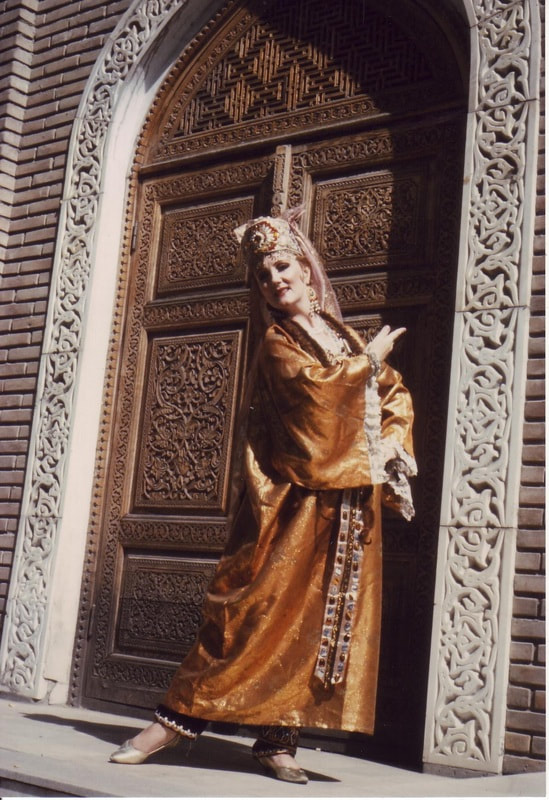
UZBEK DANCE classes via Zoom with Dr. Laurel Victoria Gray.
MONDAYS at 7pm Eastern US Time.
5 weeks for $50 USD.
BUKHRAN TRADITIONAL DANCE
Small class. Costuming info, too.
July 14, 21, 28, Aug 4, 11.
For more info: [email protected]
MONDAYS at 7pm Eastern US Time.
5 weeks for $50 USD.
BUKHRAN TRADITIONAL DANCE
Small class. Costuming info, too.
July 14, 21, 28, Aug 4, 11.
For more info: [email protected]
Q & A about my classes:
1. Who should take your class?
Anyone, at any stage of life. In traditional cultures, everyone dances.
2. What do you say to the brand new student who is new to dance?
World Dance is rooted in folk dance, and since we are all "folk," the basics of many ethnic dances are accessible to all. The nuances of style and technique can take time to master, but the dances come from a shared human need to express emotions and to celebrate life events. It is a fun, creative way to join together with others, to find your "urban tribe."
3. What kind of music do you play in class?
Teaching World Dance means I can choose from an entire world of music!
My past choreographies for Joy of Motion students have used a wide range of music - Classical Egyptian, Arabic folklore, Macedonian folk, Lebanese belly dance, Turkish-German Hip Hop, Russian Romani, Classical Persian, Bollywood, Cuban SKA, Turkish folk music, Algerian Rai, Celtic, American Tribal Belly Dance, Iranian Pop, Spanish-Arabic fusion and even the soundtracks from Game of Thrones and Frozen.
4. What is a benefit to taking this particular style of dance?
World Dance offers the opportunity to explore the beauty and excitement of other cultures. Students can also add to their movement vocabulary. For example, Arabic dance develops precise isolation while Classical Persian emphasizes graceful arms and hands. Humans are "hard-wired" to move together in rhythm, to share communal joy. Our ancestors knew this and the traditions of World Dance contain the gift of their wisdom.
5. Tell us a unique fact about yourself!
While living in Uzbekistan, I danced in the first two Uzbek government sponsored Independence Day celebrations - the only foreigner!
6. Where has the style of dance taken you? Have you traveled the world? The U.S.?
My foreign dance travels began when I was a teenager and have taken me to five different continents to study and perform. This includes the countries of Uzbekistan, Tajikistan, Azerbaijan, Georgia, Russia, Ukraine, Egypt, Qatar, Singapore, Austria, Germany, Switzerland, and Australia. Closer to home, I have taught and performed in Canada and Mexico, as well as Alabama, Arizona, California, Connecticut, Florida, Hawaii, Illinois, Louisiana, Maryland, Massachusetts, Michigan, Minnesota, Nevada, New Jersey, New Mexico, New York, Ohio, Oregon, Pennsylvania, Texas, Virginia, Washington, and Wisconsin.
Anyone, at any stage of life. In traditional cultures, everyone dances.
2. What do you say to the brand new student who is new to dance?
World Dance is rooted in folk dance, and since we are all "folk," the basics of many ethnic dances are accessible to all. The nuances of style and technique can take time to master, but the dances come from a shared human need to express emotions and to celebrate life events. It is a fun, creative way to join together with others, to find your "urban tribe."
3. What kind of music do you play in class?
Teaching World Dance means I can choose from an entire world of music!
My past choreographies for Joy of Motion students have used a wide range of music - Classical Egyptian, Arabic folklore, Macedonian folk, Lebanese belly dance, Turkish-German Hip Hop, Russian Romani, Classical Persian, Bollywood, Cuban SKA, Turkish folk music, Algerian Rai, Celtic, American Tribal Belly Dance, Iranian Pop, Spanish-Arabic fusion and even the soundtracks from Game of Thrones and Frozen.
4. What is a benefit to taking this particular style of dance?
World Dance offers the opportunity to explore the beauty and excitement of other cultures. Students can also add to their movement vocabulary. For example, Arabic dance develops precise isolation while Classical Persian emphasizes graceful arms and hands. Humans are "hard-wired" to move together in rhythm, to share communal joy. Our ancestors knew this and the traditions of World Dance contain the gift of their wisdom.
5. Tell us a unique fact about yourself!
While living in Uzbekistan, I danced in the first two Uzbek government sponsored Independence Day celebrations - the only foreigner!
6. Where has the style of dance taken you? Have you traveled the world? The U.S.?
My foreign dance travels began when I was a teenager and have taken me to five different continents to study and perform. This includes the countries of Uzbekistan, Tajikistan, Azerbaijan, Georgia, Russia, Ukraine, Egypt, Qatar, Singapore, Austria, Germany, Switzerland, and Australia. Closer to home, I have taught and performed in Canada and Mexico, as well as Alabama, Arizona, California, Connecticut, Florida, Hawaii, Illinois, Louisiana, Maryland, Massachusetts, Michigan, Minnesota, Nevada, New Jersey, New Mexico, New York, Ohio, Oregon, Pennsylvania, Texas, Virginia, Washington, and Wisconsin.

